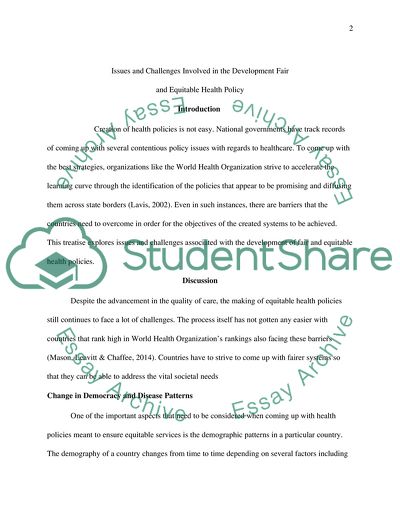Summarize the issues and challenges involved in the development fair Assignment. https://studentshare.org/medical-science/1856998-issues-and-challenges-involved-in-the-development-fair-and-equitable-health-policy
Summarize the Issues and Challenges Involved in the Development Fair Assignment. https://studentshare.org/medical-science/1856998-issues-and-challenges-involved-in-the-development-fair-and-equitable-health-policy.


